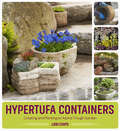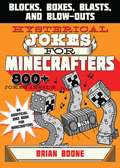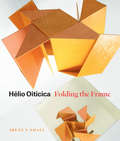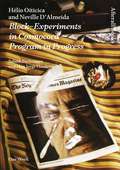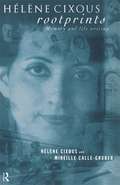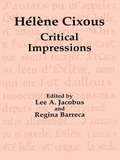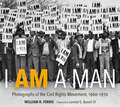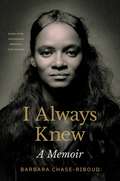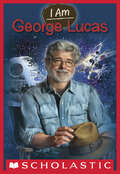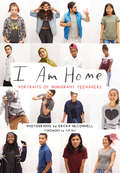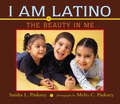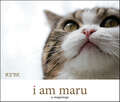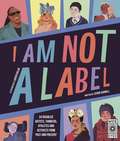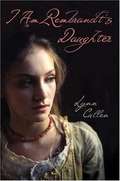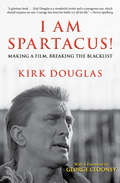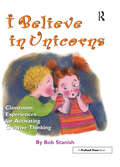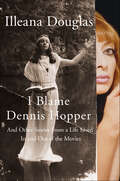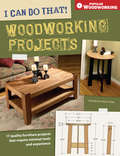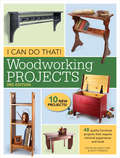- Table View
- List View
Hypertufa Containers: Creating and Planting an Alpine Trough Garden
by Lori ChipsHypertufa containers—also known as troughs—are rustic, striking, versatile, and perfect for small, Alpine plants. A mix of cement, perlite, peat, and water, they are simple and affordable to make at home. Hypertufa Containers details everything you need to know to make your own troughs and successfully garden in them. From plant portraits that include growing and cultivation information along with potting tips you’ll discover the amazing variety of plants that thrive in troughs. Hypertufa Containers features step-by-step instructions and color photography for making hypertufa containers in a variety of shapes and sizes.
Hysterical Jokes for Minecrafters: Blocks, Boxes, Blasts, and Blow-Outs (Jokes for Minecrafters)
by Brian BooneHysterical Jokes for Minecrafters: Blocks, Boxes, Blasts, and Blow-outs is the third book in the Jokes for Minecrafters series, which includes more than 800 hysterical jokes. These clever puns and silly one-liners poke fun at everything Minecraft, from creepers and ghasts to golems and endermen. These side-splitters will have any Minecrafter rolling over with laughter!Inside you will find hysterical gut-busters such as:Q: How do Creepers listen to music? A: On a boombox. Q: How do you feel if you see a floating mob overhead? A: A-ghast! This joke book for kids ages 5 and up comes complete with silly illustrations to make these jokes even funnier. Whether you’re at home or school, you can have all your friends and family in stitches over these hilarious Minecraft jokes!
Hysterical!: Women in American Comedy
by Linda MizejewskiSusan Koppelman Award Winner: “A juicy read for those who love the many ways female comics use their art to question the patriarchy.” ?BustAmy Schumer, Samantha Bee, Mindy Kaling, Melissa McCarthy, Tig Notaro, Leslie Jones, and a host of hilarious peers are killing it nightly on American stages and screens, smashing the tired stereotype that women aren’t funny. But today’s funny women didn’t come out of nowhere. Fay Tincher’s daredevil stunts, Mae West’s linebacker walk, Lucille Ball’s manic slapstick, Carol Burnett’s athletic pratfalls, Ellen DeGeneres’s tomboy pranks, Whoopi Goldberg’s sly twinkle, and Tina Fey’s acerbic wit all paved the way for contemporary unruly women, whose comedy upends the norms and ideals of women’s bodies and behaviors.Hysterical! Women in American Comedy delivers a lively survey of women comics from the stars of the silent cinema up through the multimedia presences of Tina Fey and Lena Dunham. This anthology of original essays includes contributions by the field’s leading authorities, introducing a new framework for women’s comedy that analyzes the implications of hysterical laughter and hysterically funny performances. Expanding on previous studies of comedians such as Mae West, Moms Mabley, and Margaret Cho, and offering the first scholarly work on comedy pioneers Mabel Normand, Fay Tincher, and Carol Burnett, the contributors explore such topics as racial/ethnic/sexual identity, celebrity, stardom, censorship, auteurism, cuteness, and postfeminism across multiple media. Situated within the main currents of gender and queer studies, as well as American studies and feminist media scholarship, Hysterical! masterfully demonstrates that hysteria—women acting out and acting up—is a provocative, empowering model for women’s comedy.“An invaluable collection and a great read.” ?Journal of Popular CultureWinner of a Susan Koppelman Award for Best Anthology, Multi-Authored, or Edited Book in Feminist Studies, Popular and American Culture Associations (PACA), 2017
Hysterical!: Women in American Comedy
by Linda MizejewskiSusan Koppelman Award Winner: &“A juicy read for those who love the many ways female comics use their art to question the patriarchy.&” —Bust Amy Schumer, Samantha Bee, Mindy Kaling, Melissa McCarthy, Tig Notaro, Leslie Jones, and a host of hilarious peers are killing it nightly on American stages and screens, smashing the tired stereotype that women aren&’t funny. But today&’s funny women didn&’t come out of nowhere. Fay Tincher&’s daredevil stunts, Mae West&’s linebacker walk, Lucille Ball&’s manic slapstick, Carol Burnett&’s athletic pratfalls, Ellen DeGeneres&’s tomboy pranks, Whoopi Goldberg&’s sly twinkle, and Tina Fey&’s acerbic wit all paved the way for contemporary unruly women, whose comedy upends the norms and ideals of women&’s bodies and behaviors.Hysterical! Women in American Comedy delivers a lively survey of women comics from the stars of the silent cinema up through the multimedia presences of Tina Fey and Lena Dunham. This anthology of original essays includes contributions by the field&’s leading authorities, introducing a new framework for women&’s comedy that analyzes the implications of hysterical laughter and hysterically funny performances. Expanding on previous studies of comedians such as Mae West, Moms Mabley, and Margaret Cho, and offering the first scholarly work on comedy pioneers Mabel Normand, Fay Tincher, and Carol Burnett, the contributors explore such topics as racial/ethnic/sexual identity, celebrity, stardom, censorship, auteurism, cuteness, and postfeminism across multiple media. Situated within the main currents of gender and queer studies, as well as American studies and feminist media scholarship, Hysterical! masterfully demonstrates that hysteria—women acting out and acting up—is a provocative, empowering model for women&’s comedy. &“An invaluable collection and a great read.&” ?Journal of Popular CultureWinner of a Susan Koppelman Award for Best Anthology, Multi-Authored, or Edited Book in Feminist Studies, Popular and American Culture Associations (PACA), 2017
Hélio Oiticica
by Irene V. SmallHélio Oiticica (1937-80) was one of the most brilliant Brazilian artists of the 1960s and 1970s. He was a forerunner of participatory art, and his melding of geometric abstraction and bodily engagement has influenced contemporary artists from Cildo Meireles and Ricardo Basbaum to Gabriel Orozco, Dominique Gonzalez-Foerster, and Olafur Eliasson. This book examines Oiticica's impressive works against the backdrop of Brazil's dramatic postwar push for modernization. From Oiticica's late 1950s experiments with painting and color to his mid-1960s wearable Parangolés, Small traces a series of artistic procedures that foreground the activation of the spectator. Analyzing works, propositions, and a wealth of archival material, she shows how Oiticica's practice recast--in a sense "folded"--Brazil's utopian vision of progress as well as the legacy of European constructive art. Ultimately, the book argues that the effectiveness of Oiticica's participatory works stems not from a renunciation of art, but rather from their ability to produce epistemological models that reimagine the traditional boundaries between art and life.
Hélio Oiticica and Neville D'Almeida: Block-Experiments in Cosmococa - program in progress
by Sabeth Buchmann Max Jorge Hinderer CruzHélio Oiticica (1937--1980) occupies a central position in the Latin Americanavant-garde of the postwar era. Associated with the Rio de Janeiro-based neo-concretist movement atthe beginning of his career, Oiticica moved from object production to the creation of chromaticallyopulent and sensually engulfing large-scale installations or wearable garments. Building on the ideafor a film by Brazilian underground filmmaker Neville D'Almeida, Oiticica developed the concept forBlock-Experiments in Cosmococa -- Program in Progress (1973--1974) as an "open program": aseries of nine proposals for environments, each consisting of slide projections, soundtracks,leisure facilities, drawings (with cocaine used as pigment), and instructions for visitors. It isthe epitome of what the artist called his "quasi-cinema" work -- his most controversialproduction, and perhaps his most direct effort to merge art and life. Presented publicly for thefirst time in 1992, these works have been included in major international exhibitions in LosAngeles, Chicago, London, and New York. Drawing on unpublished primary sources,letters, and writings by Oiticica himself, this illustrated examination of Oiticica's work considersthe vast catalog of theoretical references the artist's work relies on, from anticolonialmaterialism to French phenomenology and postmodern media theory to the work of Jean-Luc Godard, AndyWarhol, and Brazilian avant-garde filmmakers. It discusses Oiticica's work in relation to thediaspora of Brazilian intellectuals during the military dictatorship, the politics of mediacirculation, the commercialization of New York's queer underground, the explicit use of cocaine asmeans of production, and possible future reappraisals of Oiticica's work.
Hélio Oiticica and Neville D'Almeida: Block-Experiments in Cosmococa--Program in Progress (One Work)
by Sabeth Buchmann Max Jorge Hinderer CruzAn illustrated study that casts a new light on Oiticica's most important work of “quasi-cinema” on its fortieth anniversary. Hélio Oiticica (1937–1980) occupies a central position in the Latin American avant-garde of the postwar era. Associated with the Rio de Janeiro-based neo-concretist movement at the beginning of his career, Oiticica moved from object production to the creation of chromatically opulent and sensually engulfing large-scale installations or wearable garments. Building on the idea for a film by Brazilian underground filmmaker Neville D'Almeida, Oiticica developed the concept for Block-Experiments in Cosmococa—Program in Progress (1973–1974) as an “open program”: a series of nine proposals for environments, each consisting of slide projections, soundtracks, leisure facilities, drawings (with cocaine used as pigment), and instructions for visitors. It is the epitome of what the artist called his “quasi-cinema” work—his most controversial production, and perhaps his most direct effort to merge art and life. Presented publicly for the first time in 1992, these works have been included in major international exhibitions in Los Angeles, Chicago, London, and New York. Drawing on unpublished primary sources, letters, and writings by Oiticica himself, this illustrated examination of Oiticica's work considers the vast catalog of theoretical references the artist's work relies on, from anticolonial materialism to French phenomenology and postmodern media theory to the work of Jean-Luc Godard, Andy Warhol, and Brazilian avant-garde filmmakers. It discusses Oiticica's work in relation to the diaspora of Brazilian intellectuals during the military dictatorship, the politics of media circulation, the commercialization of New York's queer underground, the explicit use of cocaine as means of production, and possible future reappraisals of Oiticica's work.
Hélène Cixous, Rootprints: Memory and Life Writing
by Hélène Cixous Mireille Calle-GruberHelene Cixous is undoubtedly one of the most brilliant and innovative contemporary thinkers. Published here in English for the first time Helene Cixous, Rootprints is an ideal introduction to Cixous's theory and her fiction, tracing her development as a writer and intellectual whose remarkable prespicacity and electrifying poetic force are known world-wide.Unprecedented in its form and content this collection breaks new ground in the theory and practice of auto/biography. Cixous's creative reflections on the past provide occasion for scintillating forays into the future.The text includes:* an extended interview between Cixous and Calle-Gruber, exploring Cixous's creative and intellectual processes* a revealing collection of photographs taken from Cixous's family album, set against a poetic reflection by the author * selections from Cixous's private notebooks* a contribution by Jacques Derrida* original 'thing-pieces' by Calle-Gruber.
Hélène Cixous: Critical Impressions
by Lee A. Jacobus Regina BarrecaFirst published in 1999. Routledge is an imprint of Taylor & Francis, an informa company.
I AM A MAN: Photographs of the Civil Rights Movement, 1960-1970
by William R. FerrisIn the American South, the civil rights movement in the 1960s and the struggle to abolish racial segregation erupted in dramatic scenes at lunch counters, in schools, and in churches. The admission of James Meredith as the first black student to enroll at the University of Mississippi; the march from Selma to Montgomery, Alabama; and the sanitation workers’ strike in Memphis—where Martin Luther King was assassinated—rank as cardinal events in black Americans’ fight for their civil rights. The photographs featured in I AM A MAN: Photographs of the Civil Rights Movement, 1960–1970 bear witness to the courage of protesters who faced unimaginable violence and brutality as well as the quiet determination of the elderly and the angry commitment of the young. Talented photographers documented that decade and captured both the bravery of civil rights workers and the violence they faced. Most notably, this book features the work of Bob Adelman, Dan Budnik, Doris Derby, Roland Freeman, Danny Lyon, Art Shay, and Ernest Withers. Like the fabled music and tales of the American South, their photographs document the region’s past, its people, and the places that shaped their lives. Protesters in these photographs generated the mighty leverage that eventually transformed a segregated South. The years from 1960 to 1970 unleashed both hope and profound change as desegregation opened public spaces and African Americans secured their rights. The photographs in this volume reveal, as only great photography can, the pivotal moments that changed history, and yet remind us how far we have to go.
I Always Knew: A Memoir
by Barbara Chase-RiboudThe extraordinary life story of the celebrated artist and writer, as told through four decades of intimate letters to her beloved motherBarbara Chase-Riboud has led a remarkable life. After graduating from Yale’s School of Design and Architecture, she moved to Europe and spent decades traveling the world and living at the center of artistic, literary, and political circles. She became a renowned artist whose work is now in museum collections around the world. Later, she also became an award-winning poet and bestselling novelist. And along the way, she met many luminaries—from Henri Cartier-Bresson, Salvador Dalí, Alexander Calder, James Baldwin, and Mao Zedong to Toni Morrison, Pierre Cardin, Jacqueline Kennedy Onassis, and Josephine Baker.I Always Knew is an intimate and vivid portrait of Chase-Riboud’s life as told through the letters she wrote to her mother, Vivian Mae, between 1957 and 1991. In candid detail, Chase-Riboud tells her mother about her life in Europe, her work as an artist, her romances, and her journeys around the world, from Western and Eastern Europe to the Middle East, Africa, the Soviet Union, China, and Mongolia.By turns brilliant and naïve, passionate and tender, poignant and funny, these letters show Chase-Riboud in the process of becoming who she is and who she might become. But what emerges most of all is the powerful story of a unique and remarkable relationship between a talented, ambitious, and courageous daughter and her adored mother.
I Am Because We Are: African Wisdom in Image and Proverb
by Betty PressI Am Because We Are features 125 black-and-white photographs by Betty Press taken all over East and West Africa since 1987, combined with related African proverbs compiled by Annetta Miller, an American born in Tanzania. The book highlights the importance of proverbs in educating members of African societies on how to think, how to behave, and how to have a better life. Press took these photographs with the goal of making a significant educational and artistic contribution to the appreciation and understanding of African culture and society as well as our own. The photographs of daily life deal with knowledge, cooperation, love, beauty, friendship, hope, humor, sorrow, happiness, gratitude, dance, tradition, faith, peace, war, death, and human relationships. These are the same themes found in African proverbial language. Thus came the natural idea of coupling images with proverbs. Together they offer a powerful expression of African life and the universality of human emotions, ideas, and knowledge.
I Am George Lucas (I Am #7)
by Ms. Grace NorwichI created the Star Wars franchise. I am George Lucas.Learn all about this remarkable man, whose accomplishments are truly inspiring, in the continuation of the I AM series. I AM GEORGE LUCAS will follow one man's journey to become the most famous filmmaker in the world. Discover everything you wanted to know about this celebrated movie guru and creator of Star Wars. This book will feature a full-color illustrated cover, one-color illustrations throughout, a detailed time line, introductions to other notable people from the story, sidebars, and a top-ten list of important things to know about George Lucas.
I Am Home: Portraits of Immigrant Teenagers
by Rachel Neumann Ericka McConnell Thi BuiMeet the faces and voices behind the conversations around immigration. These portraits and stories of teenagers who are recent immigrants to the US from all over the world show the diversity, beauty, and potential of the people who now call the United States home. Sixty full-page portraits of students at Oakland International High School, photographed by award-winning photographer Ericka McConnell, are accompanied by their own unique, diverse, and surprising stories of what makes them feel at home. Each of these young people is inspiring in their own right and together their stories will help us consider the issue of immigration with new mindfulness and compassion. All profits from the publication of this book will be donated to Oakland International High School.
I Am Latino: The Beauty in Me
by Sandra L. Pinkney Myles C. PinkneyUse your senses and you will see,there is beauty in everything.In this celebration of Latino children, Myles Pinkney's joyous photographs and Sandra Pinkney's buoyant text showcase traditional food, music, and more through each of the five senses. From dancing the salsa and the tango to smelling delicious empanadas and mouthwatering tamales, to treasuring time with family members and even learning Spanish words and phrases along the way, this is the perfect way to celebrate Latino culture.
I Am Maru
by mugumoguMeet Maru!This round, adorable Scottish Fold cat may be an internet sensation, but he knows how to keep his celebrity status from going to his fluffy head . . . mostly. Maru and his owner, mugumogu, give readers a peek into the low-key life of the world’s most famous cat. See all his favorite hiding places—trash cans, cupboards, cereal boxes . . . if it’s cozy, he’s there—meet his treasured toys, and learn what it means to wield just the right amount of cat-titude.
I Am Not A Label
by Cerrie BurnellI Am Not a Label: 34 Artists, Thinkers, Athletes and Activists with Disabilities from Past and Present, is full of fascinating biographies of people who have made an impact on the world, from centuries past to the present. This insightful book includes both physical and mental disabilities, helping readers understand that mental and physical health play a role in navigating everyday life. Burnell prefaces the information with her own biography as a disabled person, and includes an extensive glossary.
I Am Rembrandt's Daughter
by Lynn CullenIn Amsterdam in the mid-1600s, Cornelia's life as the illegitimate child of renowned painter Rembrandt is marked by plague, poverty, and despair at ever earning her father's love, until she sees hope for a better future in the eyes of a wealthy suitor.
I Am Spartacus!: Making a Film, Breaking the Blacklist
by Kirk DouglasA &“lively&” memoir by the Hollywood legend about the making of Spartacus, with a foreword by George Clooney (Los Angeles Times). One of the world&’s most iconic movie stars, Kirk Douglas has distinguished himself as a producer, philanthropist, and author of ten works of fiction and memoir. Now, more than fifty years after the release of his enduring epic Spartacus, Douglas reveals the riveting drama behind the making of the legendary gladiator film. Douglas began producing the movie in the midst of the politically charged era when Hollywood&’s moguls refused to hire anyone accused of Communist sympathies. In a risky move, Douglas chose Dalton Trumbo, a blacklisted screenwriter, to write Spartacus. Trumbo was one of the &“Unfriendly Ten,&” men who had gone to prison rather than testify before the House Un-American Activities Committee about their political affiliations. Douglas&’s source material was already a hot property, as the novel Spartacus was written by Howard Fast while he was in jail for defying HUAC. With the financial future of his young family at stake, Douglas plunged into a tumultuous production both on- and off-screen. As both producer and star of the film, he faced explosive moments with young director Stanley Kubrick, struggles with a leading lady, and negotiations with giant personalities, including Sir Laurence Olivier, Charles Laughton, Peter Ustinov, and Lew Wasserman. Writing from his heart and from his own meticulously researched archives, Kirk Douglas, at ninety-five, looks back at his audacious decisions. He made the most expensive film of its era—but more importantly, his moral courage in giving public credit to Trumbo effectively ended the notorious Hollywood blacklist. A master storyteller, Douglas paints a vivid and often humorous portrait in I Am Spartacus! The book is enhanced by newly discovered period photography of the stars and filmmakers both on and off the set.
I Am the Beggar of the World: Landays from Contemporary Afghanistan
by Seamus MurphyI Am the Beggar of the World presents an eye-opening collection of clandestine poems by Afghan women.Because my love's American,blisters blossom on my heart.Afghans revere poetry, particularly the high literary forms that derive from Persian or Arabic. But the poem above is a folk couplet—a landay, an ancient oral and anonymous form created by and for mostly illiterate people: the more than 20 million Pashtun women who span the border between Afghanistan and Pakistan. War, separation, homeland, love—these are the subjects of landays, which are brutal and spare, can be remixed like rap, and are powerful in that they make no attempts to be literary. From Facebook to drone strikes to the songs of the ancient caravans that first brought these poems to Afghanistan thousands of years ago, landays reflect contemporary Pashtun life and the impact of three decades of war. With the U.S. withdrawal in 2014 looming, these are the voices of protest most at risk of being lost when the Americans leave.After learning the story of a teenage girl who was forbidden to write poems and set herself on fire in protest, the poet Eliza Griswold and the photographer Seamus Murphy journeyed to Afghanistan to learn about these women and to collect their landays. The poems gathered in I Am the Beggar of the World express a collective rage, a lament, a filthy joke, a love of homeland, an aching longing, a call to arms, all of which belie any facile image of a Pashtun woman as nothing but a mute ghost beneath a blue burqa.
I Believe in Unicorns: Classroom Experiences for Activating Creative Thinking (Grades K-4)
by Bob StanishTake your students on an imagination journey! Filled with thrilling activities that build creativity in your students, I Believe in Unicorns is a must have for teachers interested in encouraging imaginative thinking. Get an elephant down from a tree, build a monstrous (and odorous) "smelt," evaluate the job performance of an octopus who moonlights as a lifeguard, or remove a porcupine from your lunchbox! Activities like these will challenge your students' creativity and imagination.I Believe in Unicorns offers fun, exciting activities designed to encourage creativity and imagination among children in grades K-4. Written by a master of creativity teaching, this book offers activities that strengthen the skills essential for creative thought—fluency, flexibility, originality, and elaboration.This book was meant to be torn apart! Each student activity page was designed for duplication so that it can be used by individuals or the entire class. Mix these activities in with other classroom learning projects. Most of the adventures involve writing. However, it is important that open-ended discussion and brainstorming be frequently incorporated into these activities.Grades K-4
I Blame Dennis Hopper: And Other Stories From a Life Lived In and Out of the Movies
by Illeana DouglasFrom award-winning actress Illeana Douglas comes a memoir about learning to survive in Hollywood while staying true to her quirky vision of the world.In 1969 Illeana Douglas' parents saw the film Easy Rider and were transformed. Taking Dennis Hopper's words, "That's what it's all about man" to heart, they abandoned their comfortable upper middle class life and gave Illeana a childhood filled with hippies, goats, free spirits, and free love. Illeana writes, "Since it was all out of my control, I began to think of my life as a movie, with a Dennis Hopper-like father at the center of it." I Blame Dennis Hopper is a testament to the power of art and the tenacity of passion. It is a rollicking, funny, at times tender exploration of the way movies can change our lives. With crackling humor and a full heart, Douglas describes how a good Liza Minnelli impression helped her land her first gig and how Rudy Valley taught her the meaning of being a show biz trouper. From her first experience being on set with her grandfather and mentor-two-time Academy Award-winning actor Melvyn Douglas-to the moment she was discovered by Martin Scorsese for her blood-curdling scream and cast in her first film, to starring in movies alongside Robert DeNiro, Nicole Kidman, and Ethan Hawke, to becoming an award winning writer, director and producer in her own right, I Blame Dennis Hopper is an irresistible love letter to movies and filmmaking. Writing from the perspective of the ultimate show business fan, Douglas packs each page with hilarious anecdotes, bizarre coincidences, and fateful meetings that seem, well, right out of a plot of a movie. I Blame Dennis Hopper is the story of one woman's experience in show business, but it is also a genuine reminder of why we all love the movies: for the glitz, the glamor, the sweat, passion, humor, and escape they offer us all.
I Can Do That - Furniture Projects: 20 Easy & Fun Woodworking Projects to Build Your Skills
by Chad StantonWhat do you do when you need furniture for a specific space or purpose in your home and nothing you find fits the bill? Build your own! This book is comprised of 20 furniture projects based on the popular I Can Do That method presented in Popular Woodworking's ICDT video series hosted by Chad Stanton. These projects look good, are well made, yet at the same time achievable for even a beginner with an inexpensive (but decent) set of tools. You'll find clear instructions with complete step-by-step photos, illustrations and cutting lists to help you every step of the way.
I Can Do That! Woodworking Projects: 17 quality furniture projects that require minimal tools and experience
by David ThielYou can do that, quickly, easily and save money! Beginning woodworkers (or experienced woodworkers that are in a hurry) can build these top-quality projects quickly and efficiently. Each project requires a minimum of tools (only hand and portable power tools) and a minimum of woodworking experience. These projects need only inexpensive materials that are easily found at your local home center stores, saving you time and money. This book includes a training manual for using each tool, making it perfect for the beginning woodworker. The projects are not the typical napkin holders. They are tasteful and useful, making this book a good choice for the experienced woodworker in a hurry!
I Can Do That! Woodworking Projects: 48 quality furniture projects that require minimal experience and tools
by Scott Francis David ThielBuild quality furniture fast and simple! Beginning woodworkers (or experienced woodworkers who are looking for a weekend project) can accomplish these builds quickly.Each project requires minimal woodworking experience and only hand and portable power tools--no need for expensive equipment.These projects use only readily available materials that are easily found at your local home center, saving you lots of time and a few headaches.Within these pages you'll also find a helpful training manual for choosing and using recommended tools--it's the perfect guide for building your skills as a woodworker.Learn to build a variety of tasteful and functional items for the home including furniture, shelving and storage.
